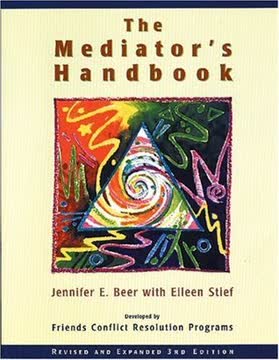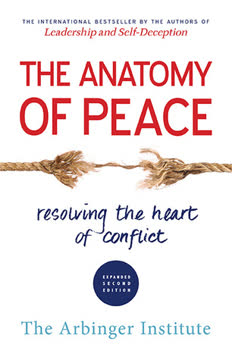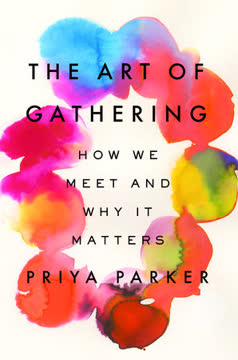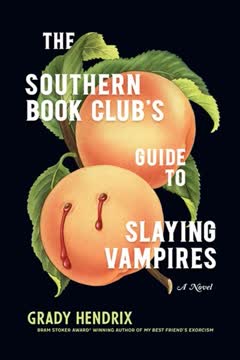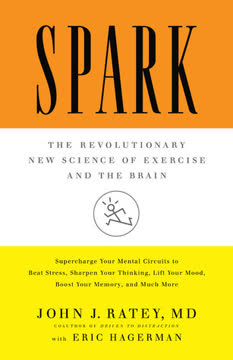Key Takeaways
1. Mediation: A Powerful Tool for Resolving Disputes
Mediation is. . . A process for resolving disputes where an intermediary helps conflicting parties have a conversation to jointly resolve their concerns.
Mediation's unique power lies in its ability to transform conflicts into opportunities for understanding and mutual problem-solving. Unlike litigation or arbitration, mediation empowers parties to craft their own solutions, guided by a neutral third party. This process is particularly effective when:
- Parties have ongoing relationships they wish to preserve
- The dispute involves complex emotions or misunderstandings
- Creative solutions beyond legal remedies are needed
- Confidentiality is important
- Time and cost savings are desired
Benefits of mediation extend beyond dispute resolution:
- Improved communication between parties
- Enhanced problem-solving skills
- Increased sense of empowerment and control
- Preservation of relationships
- Tailored solutions that address underlying interests
2. The Mediator's Role: Impartial Guide, Not Decision-Maker
Mediators are in charge of the process, and provide two essential ingredients: A structure for conversation to help people talk, listen, and think. Caring, impartial attentiveness to people, process, and concerns.
The mediator's neutrality is paramount. Unlike judges or arbitrators, mediators don't impose decisions but facilitate dialogue and guide parties towards their own solutions. This role requires:
- Active listening and empathy
- Ability to reframe issues constructively
- Skill in managing emotions and power imbalances
- Patience and persistence
Key mediator responsibilities:
- Creating a safe, respectful environment for dialogue
- Structuring the conversation to ensure all voices are heard
- Helping parties identify their underlying interests
- Encouraging creative problem-solving
- Assisting in reality-testing potential solutions
- Maintaining confidentiality and ethical standards
3. The Anatomy of a Mediation Session: From Opening to Closing
Mostly, it is the gradual sharing of information and interests that relaxes parties enough to move them in this direction.
The mediation process follows a natural progression that allows parties to move from conflict to collaboration. While flexible, a typical mediation session includes:
- Opening: Setting the tone and explaining the process
- Storytelling: Each party shares their perspective
- Issue identification: Clarifying key points of dispute
- Interest exploration: Uncovering underlying needs and concerns
- Option generation: Brainstorming potential solutions
- Negotiation: Evaluating options and reaching agreements
- Closure: Formalizing agreements and planning next steps
Key elements for success:
- Building rapport and trust early in the process
- Allowing sufficient time for emotional expression and venting
- Focusing on interests rather than positions
- Encouraging parties to generate multiple options before deciding
- Ensuring agreements are specific, measurable, and realistic
4. Supporting the People: Creating a Safe Space for Dialogue
"Supporting" approaches help people say what they need to say, hear the other parties, and begin cooperating with each other.
Emotional safety is crucial for productive dialogue. Mediators create this environment by:
- Demonstrating empathy and respect for all parties
- Maintaining neutrality while acknowledging emotions
- Setting ground rules for respectful communication
- Allowing for breaks or caucuses when tensions rise
Techniques for supporting participants:
- Active listening and reflective statements
- Normalizing emotions and experiences
- Reframing negative statements into neutral language
- Encouraging perspective-taking and empathy
- Recognizing progress and positive efforts
- Addressing power imbalances sensitively
5. Facilitating the Process: Navigating Conversations Effectively
Facilitating the movement from Distress → Specifics about problem behavior → Impacts to Needs is the heavy lifting the mediator does during the session.
Skillful facilitation keeps the conversation productive and moving towards resolution. Key strategies include:
- Using open-ended questions to elicit information
- Summarizing and clarifying to ensure shared understanding
- Managing time and pacing to maintain momentum
- Redirecting unproductive discussions
- Balancing participation among all parties
Tools for effective facilitation:
- Creating visual aids (e.g., flip charts, whiteboards)
- Using silence strategically
- Employing "looping" or paraphrasing techniques
- Breaking complex issues into manageable parts
- Identifying common ground and areas of agreement
- Adjusting the process based on participants' needs and energy levels
6. Solving the Problem: From Interests to Workable Solutions
Interests are the needs and wants that motivate someone, the benefits that people are protecting or seeking.
Interest-based problem-solving is at the heart of effective mediation. This approach moves parties from positional bargaining to collaborative solution-finding by:
- Identifying underlying interests behind stated positions
- Generating options that address multiple parties' interests
- Evaluating options using objective criteria
- Crafting agreements that are mutually beneficial and sustainable
Key steps in problem-solving:
- Separating people from the problem
- Focusing on interests, not positions
- Inventing options for mutual gain
- Using objective criteria for decision-making
- Reality-testing potential solutions
- Addressing implementation and future contingencies
7. Adapting and Evaluating: Continuous Improvement in Mediation
Everything we recommend in this book is a jump-start for you to build a mediation approach that suits you and your context.
Flexibility and self-reflection are essential for mediators to grow and adapt their practice. This involves:
- Tailoring the mediation process to specific contexts and cultures
- Seeking feedback from participants and co-mediators
- Engaging in ongoing training and professional development
- Reflecting on personal biases and areas for improvement
Strategies for continuous improvement:
- Keeping a mediation journal to record insights and lessons learned
- Participating in peer supervision or mentorship programs
- Studying diverse mediation models and approaches
- Adapting techniques for specific populations (e.g., children, families, organizations)
- Developing cultural competence and sensitivity
- Staying updated on relevant laws and ethical standards
Last updated:
FAQ
1. What’s The Mediator’s Handbook by Jennifer E. Beer about?
- Comprehensive mediation guide: The Mediator’s Handbook is a practical manual for mediators, offering a step-by-step process for resolving interpersonal and small-group conflicts.
- Process-centered approach: It emphasizes a process-centered, participant-driven model where mediators facilitate rather than dictate solutions.
- Applicable to various contexts: The book covers mediating in families, organizations, communities, and informal settings, focusing on conflicts where parties have ongoing relationships.
- Skill-building resource: It provides both foundational concepts and advanced tools, making it suitable for beginners and experienced mediators alike.
2. Why should I read The Mediator’s Handbook by Jennifer E. Beer?
- Practical, field-tested advice: The book distills decades of mediation experience into actionable steps and real-world examples.
- Empowers non-professionals: It’s designed for anyone—whether a professional mediator or someone who finds themselves informally mediating disputes among friends, family, or colleagues.
- Focus on self-determination: The Handbook’s model respects participants’ autonomy, helping them find their own solutions rather than imposing outcomes.
- Broad applicability: Its principles and techniques can improve communication, negotiation, and conflict resolution skills in everyday life.
3. What are the key takeaways of The Mediator’s Handbook?
- Mediation is a structured process: Effective mediation follows a sequence—exploring the situation, exchanging perspectives, identifying interests, generating options, and reaching resolution.
- Mediator’s role is facilitative: Mediators guide the process, maintain impartiality, and support participants, but do not decide outcomes or advocate for any party.
- Interests over positions: Focusing on underlying interests rather than fixed positions leads to more durable and creative solutions.
- Respect and self-determination: The process is grounded in respect for all parties and their right to make their own decisions.
4. How does The Mediator’s Handbook define mediation and what makes it effective?
- Definition of mediation: Mediation is a process where an impartial intermediary helps conflicting parties have a structured conversation to jointly resolve their concerns.
- Effectiveness factors: Mediation works best when parties are willing to participate, have a stake in resolution, and are capable of making and keeping agreements.
- Participant-driven outcomes: Solutions are more durable when they arise from the parties themselves, addressing both practical and emotional needs.
- Structured yet flexible: The process provides enough structure to manage difficult conversations but adapts to the needs and context of the participants.
5. What is the process-centered mediation model in The Mediator’s Handbook?
- Focus on process, not outcome: Mediators structure the conversation and environment, remaining neutral about the outcome and not suggesting specific solutions.
- Participant goals as compass: The process is guided by what the participants want to achieve, whether it’s reconciliation, practical solutions, or simply a truce.
- Organic sequence: The model follows a natural progression—opening, listening to perspectives, exchanging information, identifying topics, generating options, making decisions, and closing.
- Success redefined: Success is measured by increased clarity, understanding, and the parties’ ability to cooperate, not just by reaching an agreement.
6. What are the main steps in the mediation process according to The Mediator’s Handbook?
- Getting to the table: Assessing whether mediation is appropriate, preparing participants, and setting up logistics.
- Exploring the situation: Opening the session, allowing each participant to share their perspective, and clarifying information.
- The Exchange: Facilitating open discussion to uncover interests, address misunderstandings, and encourage empathy.
- Reaching resolution: Creating a Topic List, brainstorming options, reality-testing solutions, and making decisions.
- Writing and closing: Drafting a clear, mutual agreement and closing the session with reflection and next steps.
7. What are the key skills and principles for mediators in The Mediator’s Handbook?
- Impartial empathy: Mediators must show equal support and understanding to all parties, without taking sides.
- Active listening and acknowledging: Giving full attention, reflecting back, and summarizing to ensure everyone feels heard.
- Managing process and participation: Structuring sessions, balancing participation, and intervening when necessary to keep discussions productive.
- Respect and self-determination: Valuing each person’s experience and supporting their autonomy in decision-making.
8. How does The Mediator’s Handbook address understanding and managing conflict?
- Conflict as multi-layered: The book explores conflict through metaphors (weather, chess, theater) and emphasizes the emotional, relational, and systemic dimensions.
- The Conflict Triangle: Mediators must attend to people (emotions, relationships), process (how they interact), and problem (the substantive issues).
- Effects of conflict: Recognizes both the negative impacts (stress, adversarial mindsets) and the sometimes pleasurable aspects (sense of purpose, camaraderie).
- The way out is through: Durable resolution requires working through emotions and details, not just quick fixes.
9. What are “interests” and why are they central in The Mediator’s Handbook’s approach?
- Definition of interests: Interests are the underlying needs, wants, and motivations that drive people’s actions in conflict.
- Interests vs. positions: Focusing on interests (the “why”) rather than positions (the “what”) opens up more options for resolution.
- Layers of interests: Interests can be immediate, long-term, public, private, emotional, or practical, and often multiple layers are at play.
- Basis for solutions: Identifying and articulating interests helps parties generate creative, mutually satisfying agreements.
10. How does The Mediator’s Handbook guide mediators in handling difficult situations and emotions?
- Supporting emotional expression: Mediators are encouraged to acknowledge emotions, allow space for tears or anger, and use silence or breaks as needed.
- Separate Conversations: Private meetings with each party can help manage strong emotions, strategize, or address sensitive topics.
- Dealing with impasse or escalation: The book provides tools for intervening in shouting matches, handling walkouts, and addressing attacks or accusations.
- Safety and boundaries: Mediators are responsible for protecting participants from abuse and knowing when to end a mediation if it becomes unsafe or unproductive.
11. What tools and techniques does The Mediator’s Handbook offer for problem-solving and agreement writing?
- Topic Lists and brainstorming: Organizing concerns into topics and generating multiple options before evaluating them.
- Reality-testing and “what-ifs”: Helping parties assess the workability and durability of proposed solutions.
- Reframing and neutral language: Translating charged statements into neutral, outcome-focused interests and topics.
- Writing clear agreements: Emphasizing specificity, mutuality, positive framing, and contingency planning in written agreements.
12. What are the best quotes from The Mediator’s Handbook and what do they mean?
- “The way out of conflict is through dialogue, which means talking and listening directly to each other.” This highlights the book’s core belief that open, honest conversation is essential for resolution.
- “Impartial doesn’t mean indifferent! Perhaps it’s better to think of being equally partial towards every person.” Mediators must care deeply about all parties, not just remain neutral.
- “Success is not just reaching agreement, but restoring or catalyzing the parties’ ability to cooperate in meeting each other’s reasonable needs and hopes.” The process is as important as the outcome.
- “We just made it up!” (Eileen Stief) Reminds mediators that mediation is a living craft, open to adaptation and creativity, not rigid rules.
- “Freedom of self-determination is at the heart of this model of mediation.” The book’s approach centers on empowering participants to make their own choices.
Review Summary
The Mediator's Handbook is generally well-received, with readers praising its practical approach and easy-to-understand content. Many find it useful for both aspiring and experienced mediators. The book is commended for its clear explanations, practical examples, and valuable tips. Some readers appreciate its concise format compared to other mediation texts. While most reviews are positive, a few critics find it too educational or manual-like. Overall, it's considered a valuable resource for those interested in mediation, with many recommending it as an essential guide for mediators.
Similar Books
Download PDF
Download EPUB
.epub digital book format is ideal for reading ebooks on phones, tablets, and e-readers.
